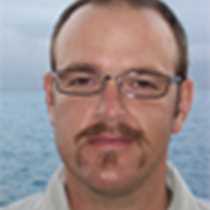Urbina Bay & Tagus Cove Isabela Island
The bright equatorial sun greets us after we weigh anchor and navigate from our overnight anchorage at Fernandina Island to Urbina Bay on the west coast of Isabela. Urbina Bay has had a violent volcanic past as it was uplifted in 1954 prior to volcanic activity. Approximately two square kilometers of the shallow intertidal zone was uplifted over five meters in certain areas. Volcanic uplifts occur when pressure from a magma chamber builds and is not able to be released necessarily from the main crater or caldera and the flanks are uplifted. Massive coral heads and an abundance of invertebrates were trapped in the hot sun, high and dry.
We make our first landing of the day and start our hike along the relatively new coastal line here at Urbina. Tube worm, oyster, coral, bivalve, and sand dollar pieces are found inland as we come upon Galápagos land iguanas. Large iguana burrows are littered among the salt-resistant vegetation that has grown from 1954 until present with large Galápagos land iguanas lazing under the sparse vegetation. As we explore farther inland a massive volcanic boulder seems to move and we recognize it as a Galápagos tortoise from the Alcedo population. Six more females at various ages are encountered, and we are content to find this unique species. The cooler water of the western archipelago is welcomed as we take a swim before returning to our ship.
The rugged western coast of Isabela Island is observed as we navigate to our afternoon site, Tagus Cove. This area has been visited by sailors for possibly more than 300 years as this bay is protected from coastal currents found between Fernandina and Islabela Islands. Scrawling on the cliff walls show us the visitors that frequented this area and there is graffiti dating back to 1836.
Kayakers and snorkelers head out along the coast and both groups are pleased with the close proximity of the Galápagos penguins and flightless cormorants. Underwater the snorkelers are swimming among the penguins and Pacific green sea turtles with the occasional sea lion trying to play with this curious human species. In the late afternoon hikers disembark at Tagus literally walking in Darwin’s footsteps. Charles Darwin on the H.M.S. Beagle landed here in 1835 and hiked inland to a hyper saline lake now named Beagle Lake. Young Darwin was disappointed that they were not able to find freshwater, however he was able to see his first Galápagos land iguana. Darwin only landed on four islands in the Galápagos for a total of 19 days on land and was not overly impressed with this environment, however it was to be a pivotal entry in his transmutation diaries later on. As we navigate away from our anchorage at Tagus Cove we can agree with Darwin in all aspects that this is a, “A little world within itself…”




